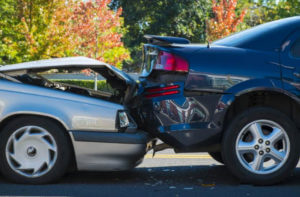Do Car Accident Prevention Systems Actually Prevent Traffic Collisions?
 Newly designed automobiles include more safety features than they used to, and more cars than ever are being equipped with car accident prevention systems. But are these technological innovations as effective as they sound? According to an article in Consumer Reports, collision-avoidance technology really does work. In particular, a recent report from ABC News emphasized that automatic emergency braking systems (AEB) “have proven to prevent car accidents.” What else do you need to know about auto accident prevention and the use of collision-avoidance technology?
Newly designed automobiles include more safety features than they used to, and more cars than ever are being equipped with car accident prevention systems. But are these technological innovations as effective as they sound? According to an article in Consumer Reports, collision-avoidance technology really does work. In particular, a recent report from ABC News emphasized that automatic emergency braking systems (AEB) “have proven to prevent car accidents.” What else do you need to know about auto accident prevention and the use of collision-avoidance technology?
Cars with Lasers, Cameras, and Radars to Help Prevent Crashes
When we talk about collision-avoidance technologies, what do we mean specifically? While the ABC News report alluded to automatic braking systems, it is important to understand the wide variety of technological tools that help cars—despite driver distraction or other human error—to avoid a dangerous car wreck. According to the Consumer Reports article, most of the “cutting-edge active safety systems” that truly are working to prevent auto accidents “rely on a number of sensors, cameras, lasers, and short- and long-range radar.” This sounds very complicated, and indeed it is. However, the impact of these devices is not difficult to understand. What they do is monitor activity around a vehicle and alert drivers to car crash risks.
For example, these cameras, radars, and lasers have the ability to “see,” in some sense, obstacles around a vehicle, including pedestrians, bicyclists, and other automobiles. In some cases, these tools can also process road signage. The first stage of accident prevention occurs when the technology identifies an object and attempts to alert the driver to its presence. This can happen in a number of ways that the article describes as “attention-grabbers.” For instance, your car might do one of the following if it suspects you might hit an object nearby:
- Emit a loud beep;
- Flash an icon on your dashboard;
- Tug at your seatbelt;
- Send a vibration to your driver’s seat; or
- Send a vibration to your steering wheel.
In the event that a driver does not respond to one of these “attention-grabbers,” then other safety features can intervene. For example, a situation in which a driver does not begin braking despite the presence of a pedestrian can lead to an automatic emergency braking system stopping the vehicle before a collision occurs.
Downsides to Collision-Avoidance Technologies
When collision-avoidance technologies are working properly, there are not many downsides. However, cars featuring these devices can be expensive, and not all cars come equipped with technology that can intervene to prevent an auto accident when a driver is not paying attention. As the article notes, “most advanced systems today come only as part of a large options package or on a model’s higher, more expensive trim versions,” and the latter can “add thousands of dollars to a vehicle’s price.”
In addition, drivers can turn off those “attention-grabbers” we mentioned. Some people find that beeps or vibrations are annoying or frustrating, and they opt to put them in the “off” position. And still, not all collision-avoidance technologies are created equally. In short, some are better and more effective than others. But regardless of the quality of an accident prevention system, the article concludes that “there’s a net benefit regardless.”
Contact a Naperville Car Accident Attorney
If you suffered injuries in a car accident, an experienced car accident attorney in Naperville can discuss your options with you for filing a lawsuit. Contact Woodruff Johnson & Evans Law Offices today to talk about your case.
